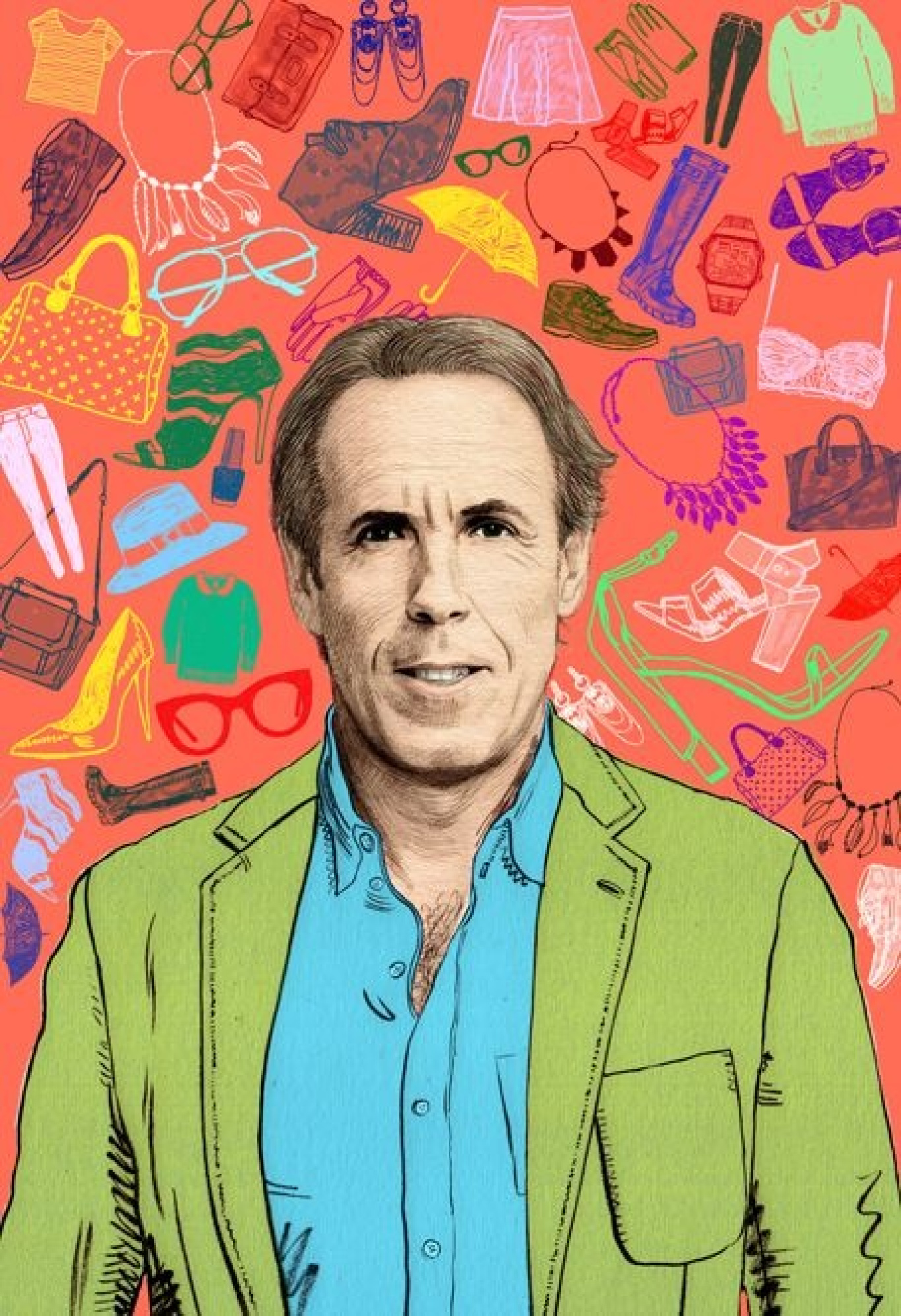Intervista a Stefano Beraldo, AD Gruppo Coin. Illustration by Anna Higgie

Beraldo is responsible for the repositioning of Coin and OVS in the market. He is also responsible for experimenting with a luxury multi-brand like Excelsior. All-round manager and sensitive interpreter of fast fashion, Stefano Beraldo is a leading protagonist of the current consumer revolution.
It seemed to be headed for decline but instead, under you, the glamour has returned to the city department store?
The department store in Italy has evolved differently from the rest of the world. Here the peculiarities of the urban landscape, made up of squares and streets where the workshopsof the Renaissance were born, has fostered a form of trade that is unique in the world. Small shops in the city centre have become natural places where local dealers have managed to blend love of fashion with knowledge of the territory. The brands of each positioning have been able to find fertile soil for diffusion in this alchemy. Today, the situation is changing. What is benefiting the department store, also in Italy, is on the one hand the emergence of shopping centres which are replacing the pleasure of walking with the efficiency of a car park and emotion with quantity and completeness, and on the other the crisis that has reduced consumption and the investment capacity of small businesses. However, today's department store is no longer seen as a place where you can find everything, but as a big store that combines a variety of reasons for visiting it. The shopping experience is freer and more open, expressed in a modern well-kept container, where staff assist you with measure and balance. In this context, when I arrived nine years ago, Coin was a fake department store. Much of the supply consisted of own brands and there were only a few brands dedicated to mass retail. Today, Coin has certainly turned into a very contemporary banner. I think that in our 52 stores you can find about 5000 corners or areas dedicated to one brand: from fast fashion of success to affordable Italian or American luxury. But we don't want to stop here. The need of brands to find a distribution in line with their positioning, which the small shop is often unable to guarantee, and traffic volumes such as to justify investments, are leading us to accelerate towards quality. I wanted to establish Excelsior Milano precisely to exploit this need for the luxury of a sophisticated container which is managed with the aim of becoming a destination for customers looking for quality and beauty. And now, thanks to the experience of Excelsior Milano, Coin will also enter its final phase. That of affordable luxury. Not only brands with high distribution but also the best of Italian and international prêt-à-porter in a refined and elegant atmosphere. In the near future, the first major novelty.
Online luxury shopping is in continuous growth. Will this also happen for purchases in the medium-low price bracket?
Online sales in our country are still insignificant. The greatest attention is being paid to luxury. It is here that the customer can find numerous platforms that offer end of season products at favourable prices. For the moment I am considering e-commerce as a place where we can best position our image. We have reached the stage where it is here that many important relationships with customers are formed. Here, who visits you does so out of pure choice, not because he found your brand along the way. Here you are chosen from among hundreds of competitors. Here you are judged on variables other than those that operate in the physical store. I am asking my team for perfect and interesting photo shoots and fits. I don't want an emporium site.
Support for young designers. Do you have a strategy for engaging them in large-scale distribution?
It's fundamental for us. It's important for them. We have to convince a lot of talented people that there is not just the front line as an outlet for their creativity and skills. In fact, I think that in the future we will more and more often see organic and non-episodic collaborations between the style offices of the fast fashion companies and major fashion designers. For them it is a great challenge to achieve beautiful, commercial products, and at the low prices that this positioning imposes. Here there is much to be learnt from the automotive world. Great talents have made small cars, not just flagships. For our part, with the F4YG (Fashion for Young Generation) initiative we are successfully investing in young people. We’re doing this in partnership with the most prestigious fashion schools in the world, putting the production and distribution capacity of OVS and experience of established designers at the service of young graduates to guide them in the creative process. It’s a long-term project which was launched in 2013 and has starred authoritative names such as Central St. Martins and Matthew Williamson, Marangoni Institute and Alberto Aspesi, who have assisted two young talents in creating capsule collections that have become sold out in a few days.
What would you like to see in the future of fashion, and of Italian fashion?
In the future of fashion and of Italian fashion in particular, I would still like to see one of the things I note today; that is, an immense creative capacity which, thanks to the low barriers to entry that characterise this sector, allows intelligent people to impose Italian talent and taste in the world. On the other hand, I'd like to see an even greater consistency of enterprise emerge. In the sense that all too often in recent years, our labels, which are parts of our cultural landscape, have been sold to groups that have known how to transform themselves and become multinationals. From maison to business. From business to group. Growing to remain architects of our future.